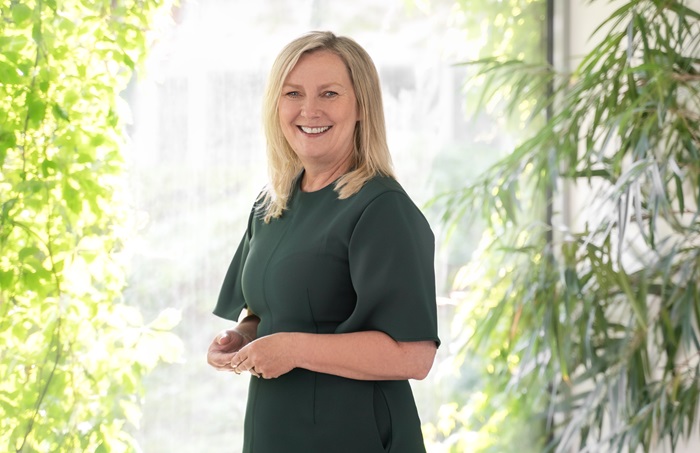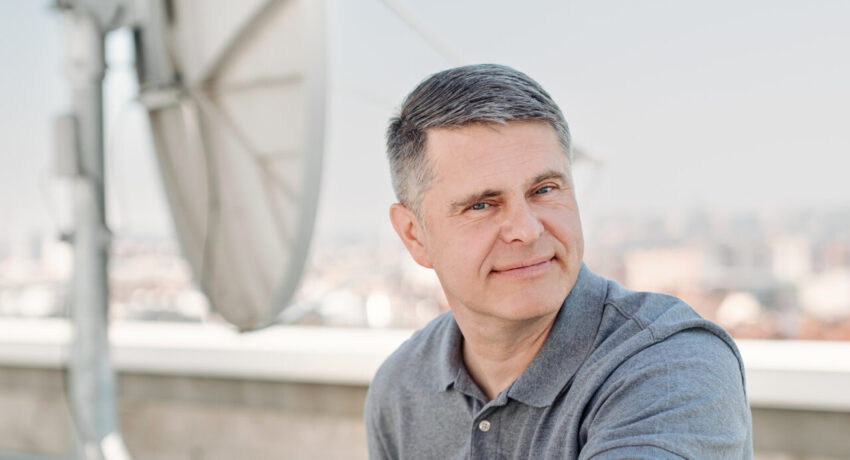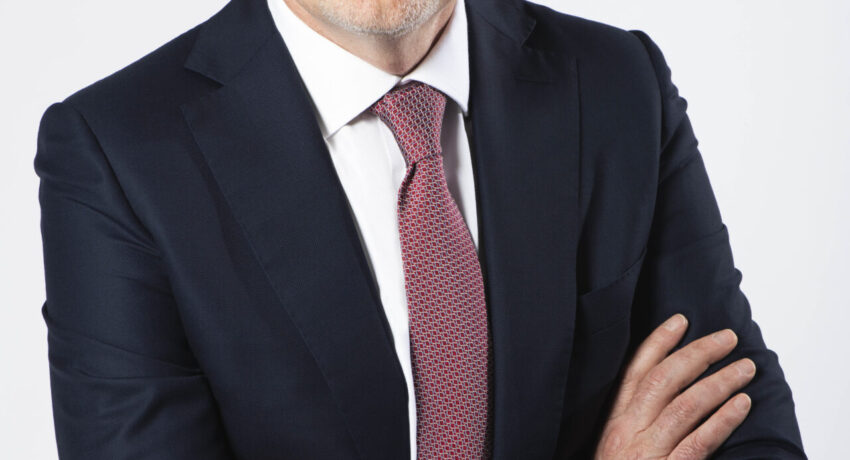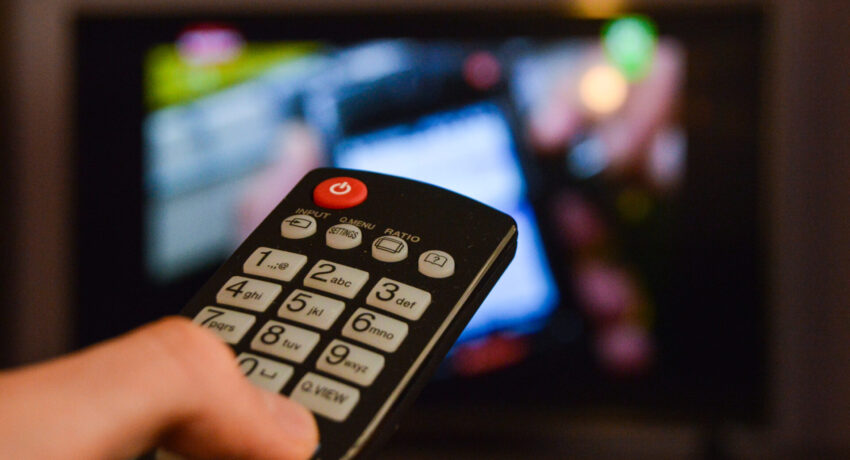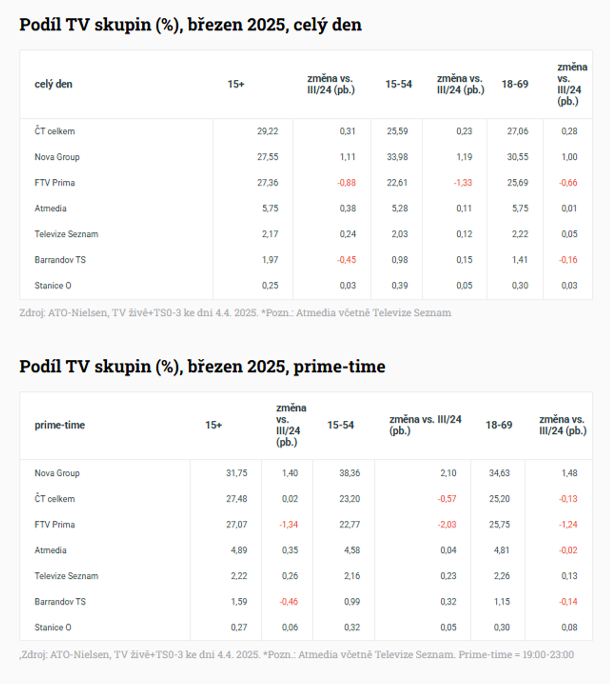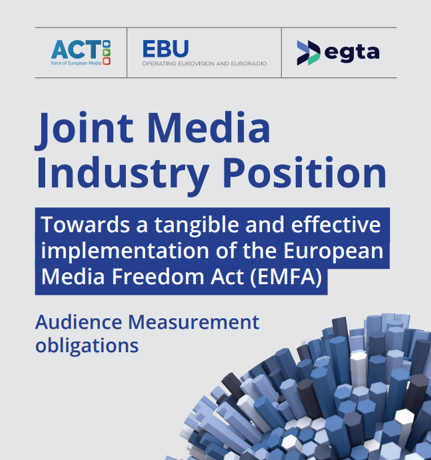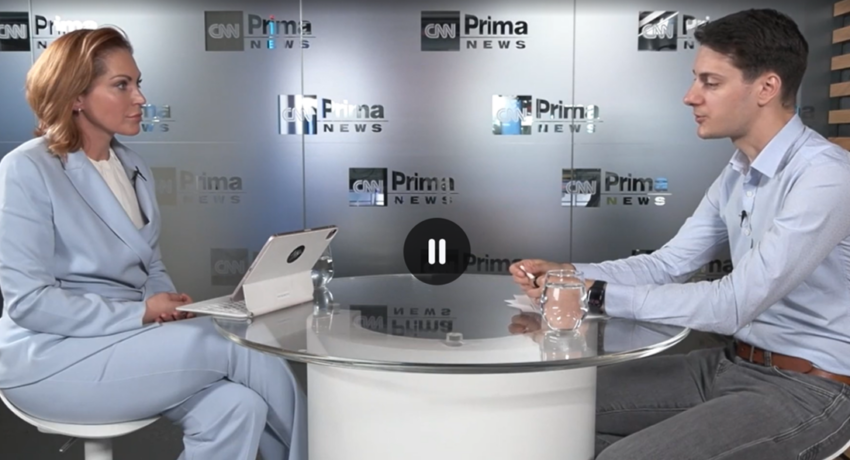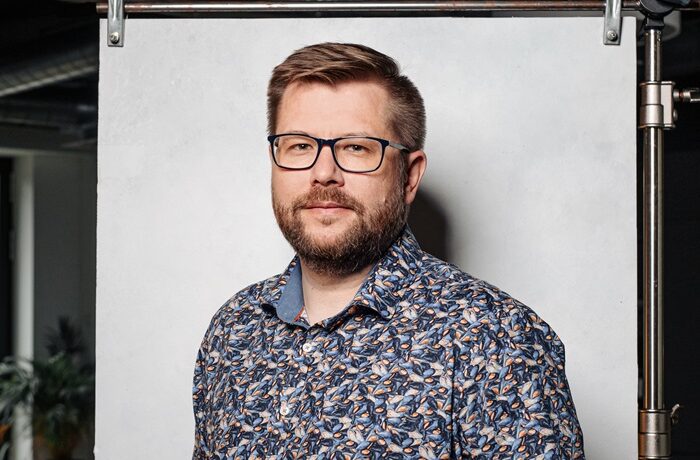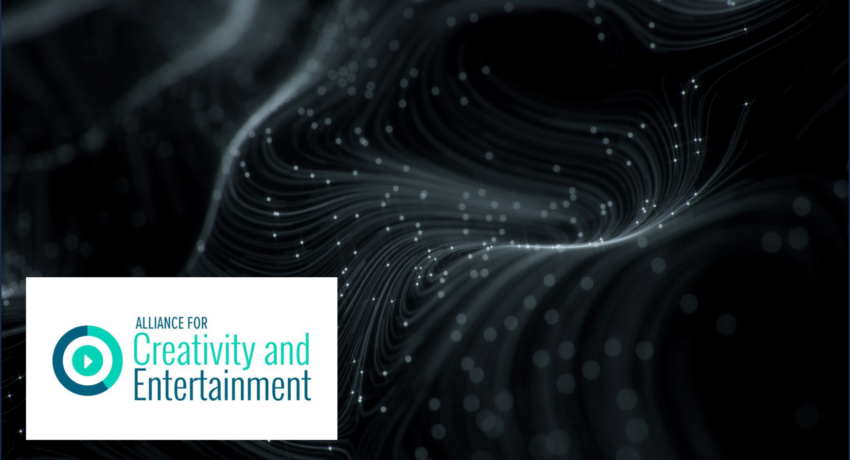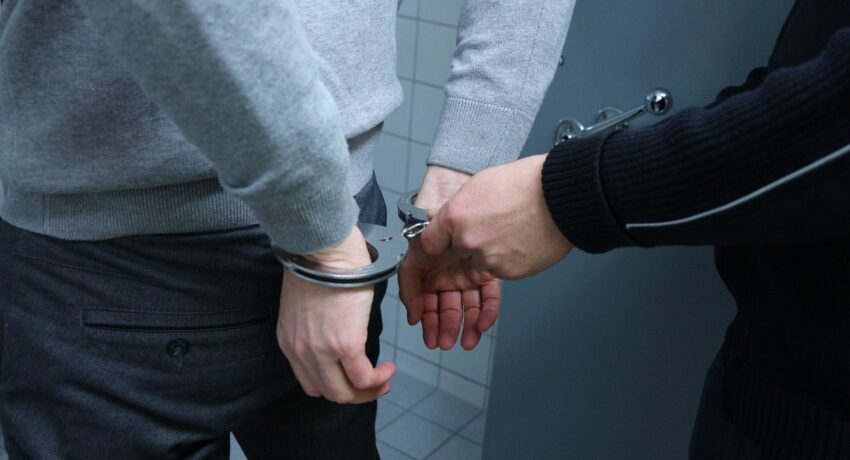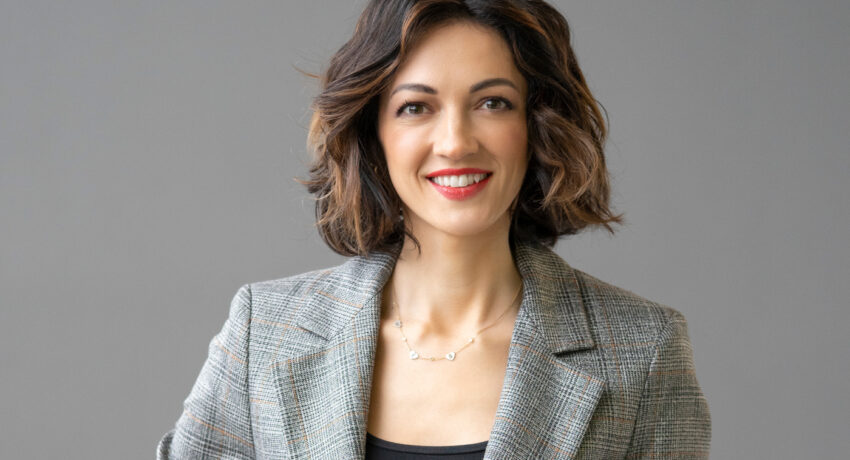The media group CME, which includes the Czech TV Nova, is continuing its digital transformation, gradually changing the structure of its revenues. However, in the countries where it operates, it does not apply a purely centralised strategy, explains Klára Brachtlová, Deputy CEO of the CME group.
Digital transformation, changes in viewer behaviour, and the growing role of paid video content. The media group Central European Media Enterprises (CME), which operates in six markets in Central and Eastern Europe, decided four years ago to strategically focus on digital services. The result has been, among other things, the development of its own VOD platform, which is used by over a million subscribers, as well as a significant diversification of revenues. “Five years ago, advertising accounted for about 80 percent of total revenue; today, it’s at most two-thirds,” says Klára Brachtlová, Deputy CEO and Chief External Affairs Official at CME.
Unlike some global players, CME does not apply a uniform model across all markets. The strategy is adapted to local conditions and viewer habits. “It’s not that we blindly follow one path as the only possible way,” she adds.
The group continues to strengthen its financial results and maintains its position as the commercial leader in the linear television segment in four out of six markets. In the following interview, Klára Brachtlová discusses CME’s strategy, market differences, viewer preferences, and the potential for future development.
Exactly four years ago, CME officially introduced its new strategy focused on the digital environment, into which it directed a significant portion of its investments. Has it been successful in implementing this digital strategy across the countries where CME is active?
The strategy outlined four years ago is being fulfilled. The entire group has embarked on a path of digital transformation, adapted to the conditions and situations of individual markets. Each market where CME operates is in a slightly different position. In some places, video-on-demand (VOD) services are more developed, while in others they are gaining ground more gradually alongside linear television. Overall, however, our vision is coming to fruition. We set a goal in terms of the number of subscribers, and we are sticking to that plan — in fact, we are even surpassing it.
The plan that CME CEO, Didier Stoessel, set out at the time was based on building the Voyo service and focusing on non-linear viewing. Voyo has managed to establish itself, and now it is transforming into Oneplay on the Czech market. What’s next? What is the strategy for the coming years?
The current era is very dynamic, and that’s not going to change — in fact, it will accelerate. We are still at the beginning of the transformation. The first logical step was the shift toward non-linear services. A clear decision was made to enter and expand in the VOD market under the Voyo brand. On the Czech market, we have essentially fulfilled Voyo’s potential, and in order to continue growing, we needed to take the next step. That step is the launch of Oneplay — a next-generation service that combines a VOD platform, exclusive content, pay TV, and traditional linear channels. We are thus talking about a shift toward a hub that connects various options and ways of viewing, different types of content, and their distribution.
Can we therefore consider Oneplay as the next phase of the digital transformation that was initiated five years ago?
Yes, and this is the next step.
Is it time-limited? Do you have a set horizon within which this phase should be completed?
It is not fixed. Based on data, we always evaluate very carefully how the service is performing. If we see its product potential, we don’t intervene. Once the service’s significance has been exhausted, we move on to the next phase.
If we are talking about Oneplay in the Czech Republic, I believe the next logical step will be the introduction of advertising elements in the form of an advertising layer, and probably also other types of content, such as gaming. In this way, the goal is to concentrate as much entertainment and information as possible in one place.
If we are talking about Oneplay in the Czech Republic, I believe the next logical step will be the introduction of advertising elements in the form of an advertising layer, and probably also other types of content, such as gaming.
Klára Brachtlová
The launch of Oneplay has only been officially announced for the Czech market so far. What will happen in other CME countries? What are the plans?
It is important to consider that each country we operate in is in a slightly different situation. I would compare it to taking care of six children, each of whom is at a different stage of development and has slightly different characteristics. The markets also differ in size and the level of VOD service penetration.
We can see that, for example, Slovakia is very close to the Czech Republic. That’s why, five years ago, we wanted the strategies for both markets to be combined. Last year, we slightly adjusted it when we launched the Voyo Maximum service in Slovakia, which offers the best sports content in Slovakia. Data showed us that such an offering should have potential in Slovakia, which has been confirmed. Moreover, we believe there is still room for growth. Therefore, we are currently prioritising it over the development of Oneplay.
In Romania, on the other hand, there is a very strong consumption of linear channels. We are focusing a lot on the development of Voyo there and investing in Voyo Originals. We are considering replicating the Oneplay strategy in the Romanian market. But it is still in the stage of consideration. We are watching it.
On the other hand, in Bulgaria, we don’t see such potential in digital services yet. We are not investing much in Voyo there. Instead, we are focusing on monetisation and improving the position of our television within the linear TV channels.
We also operate in Slovenia, where interest in VOD services has been growing rapidly. It is also the country where CME records the highest share of time-shifted viewing. We are focusing on how to profile the VOD service to make it more premium and to better monetise it.
In Croatia, we launched Voyo in the autumn of 2023, and within a year and a half, we have seen nice growth there.
This implies that CME does not apply a uniform strategy across all markets. Therefore, the launch of Oneplay will likely not concern all countries, and you will rather proceed in a targeted manner.
It doesn’t seem that a centrally set strategy and its exact transfer to individual countries would be effective for CME. Our task at the headquarters is to monitor trends and evaluate as accurately as possible what works and how, and then make decisions based on that. It’s not the case that we blindly push one path as the only possible one.
How are the individual markets of the CME group performing economically? Does it still hold true that the strongest revenue generators are the Czech Republic and Romania?
That hasn’t changed. The Czech Republic and Romania remain the pillars of the group. Compared to before, Slovakia has grown, and the other countries are stable. Overall, we are seeing, particularly in the Czech Republic and Slovakia, a shift in the revenue structure from significant dependence on advertising revenues towards other revenue sources, such as SVOD or proceeds from the distribution of our channels. Five years ago, advertising accounted for about 80% of total revenue; today, it’s a maximum of two-thirds.
Overall, we are seeing, particularly in the Czech Republic and Slovakia, a shift in the revenue structure from significant dependence on advertising revenues towards other revenue sources, such as SVOD or proceeds from the distribution of our channels.
Klára Brachtlová
Do differences in viewer behaviour across CME countries deepen over the years?
As I’ve already hinted, each country has its specifics. In Slovenia, time-shifted viewing is strong, while in Romania, linear channels still hold a strong position. The same is true for Bulgaria. Due to the significant effort put into developing Voyo in recent years, we are seeing a significant shift in viewer behaviour towards non-linear services in the Czech Republic. The situation is similar in Slovakia.
CME has invested a lot in sports content on the Czech market, and as a result, it launched additional sports channels under the Nova Sport brand. Do you follow a similar approach with sports content in other countries?
We also apply a targeted strategy with sports content. We don’t launch sports channels in other markets exactly the same way as in the Czech Republic and Slovakia. One reason for this is that the prices of sports rights have been rising over time, and other large platforms are also demanding them. As relatively small regional broadcasters, we don’t have an advantageous position in this regard. We also consider how to monetise the rights, and we must take into account the size and the entire ecosystem in each country. For example, public broadcasters in the Adriatic region have significant economic power, and competing with them in sports rights tenders doesn’t make much sense. However, it is clear that sports content works in Romania alongside the Czech Republic and Slovakia; in other countries, there is not yet such potential.
This brings us to content preferences. In the Czech Republic, we see that local series, particularly crime dramas, detective shows, true crime, or stories based on real events, work well. Can viewer preferences be generalised for other countries as well?
Viewer preferences are different in each country, but the pattern is ultimately always the same: high-quality local content works. In our case, similar to Germany, fiction such as crime dramas or true-crime series works well, even in more complex productions. Slovakia tends to favour emotional stories, romance, and romantic reality shows. Croatia and Slovenia are also strong in local production; for example, Croatian projects on Voyo resonate strongly in neighbouring countries. This is one of the reasons we launched Voyo in Serbia last year, even though we don’t have a television station there. We are cooperating with Yettel, the operator which is also part of the PPF Group. These synergies between companies within the group give us a huge advantage in the market, and we plan to continue leveraging them.
Bulgaria is very oriented towards entertainment, especially reality entertainment, and we see similar trends in Romania, where more complicated crime dramas and more complex fiction projects also perform well.
The synergies between companies within the group give us a huge advantage in the market, and we plan to continue leveraging them.
Klára Brachtlová
What were the revenue and profit results of the CME Group last year compared to the previous year?
I cannot comment on the results as they are not yet available, but overall, the CME Group had a very good year. In the linear television segment, we confirmed our position as the commercial leader in four countries. We are second in Bulgaria and Croatia, where we managed to narrow the gap with Nova TV last year [editor’s note: Nova TV is part of RTL in Croatia]. In the non-linear services segment, we announced reaching one million Voyo subscribers across the region at the beginning of last year, which confirms significant growth in VOD over the past years.
And when it comes to the total reach of CME’s television channels, do they still maintain a level of 48-49 million viewers?
Yes, that’s correct, but it’s not the reach in terms of actual viewers; it’s the total population in the countries where we operate our television channels, that is the overall market potential. The portfolio of linear channels is not changing significantly either.
In the Central and Eastern European region, do viewers move from linear broadcasting to non-linear, as they do in Western Europe?
In our region, this trend is slower. However, in the Czech Republic and Slovakia, thanks to Voyo, we are noticing more viewers shifting towards non-linear services. In other countries, it’s not as dramatic, but it is gradually starting to happen. Compared to our colleagues in Western Europe, we have a bit more time to prepare. But even here, these trends are already visible.
You also sit on the supervisory board of the German group ProSiebenSat.1, and therefore, I’m interested in how the situation looks on the German market and whether the developments there can provide insights into how the Czech market might evolve.
The German market, due to its size and the significant presence of multinational players, such as Amazon, which has a strong foothold there, has a different level of VOD service penetration. Moreover, it is already saturated with SVOD offerings and is shifting toward AVOD and HVOD services, meaning video services supported by advertising. This is also the case for ProSiebenSat.1 and its streaming platform Joyn, which is focusing more on AVOD, i.e., advertising revenues. The German economy has not been in the best shape in recent years either, which affects the level of private consumption and advertising investment. A five-year retrospective shows that the German market has been declining by an average of 3%, while CME markets have been growing by single-digit percentages or, in the worst case, have remained at comparable levels. German TV broadcasters are therefore generally in a more difficult position, also due to greater competition.
In the Czech Republic and Slovakia, we are noticing more viewers shifting towards non-linear services. In other countries, it’s not as dramatic, but it is gradually starting to happen.
Klára Brachtlová
In the past two years, you also held the position of President of the Association of Commercial Television (AKTV). A lot has happened in the field of media legislation during this period, whether it’s the new Audiovisual Act or the major media amendment. How do you evaluate this period?
It was a very challenging period and one of the busiest in the eight-year history of AKTV. Three major things were worked on. The first was the transformation of the State Fund for Cinematography into the Audiovisual Fund. It is now in effect, and the fund operates based on new principles. I mostly evaluate the new law positively, although we are not 100% satisfied. In our opinion, it levelled the playing field by making all VOD service providers on the market, including foreign ones, subject to fees. I greatly appreciate the approach of the Ministry of Culture, which involved us in discussions about the form of the amendment and, throughout the entire process, reflected the current situation and was very flexible.
The major media amendment, which you, along with other commercial media, initially opposed during its creation, has now passed the Senate and has been signed by the president. The final version has undergone some changes compared to the initial proposals. Are you satisfied with it?
The so-called major media amendment has successfully passed the legislative process and is coming into effect. Some related topics remain open, such as the proposal to amend the constitutional law, which would allow public service television to be subject to the control of the Supreme Audit Office (NKÚ).
I am a strong advocate of the dual media system as a safeguard of democracy, but it is necessary to set fair conditions for the sustainable financing and operation of public service media alongside private ones. In this regard, the amendment is a good step forward, for example, by tightening the limits on revenue from advertising messages. However, I would still consider it appropriate to legally or otherwise define the concept of public service media in a binding way.
Another major topic that we have been intensively addressing within AKTV concerns the implementation of the European Media Freedom Act (EMFA). We are part of the entire implementation process, with the law expected to be incorporated into Czech legislation in August of this year. European legislation remains a key topic for this year, during which I expect further regulatory preparations at the European level.
Klára Brachtlová
Since 2024, she has served as Interim Deputy CEO and Chief External Affairs Officer at CME (Central European Media Enterprises), where she is responsible for activities in Slovakia, Slovenia, Bulgaria, and Croatia. She also manages CME’s external relations in the Czech Republic and with European Union institutions. Prior to joining CME’s leadership, she held key roles at Nova TV, where she served as Chief Financial Officer, Executive Director, and from 2019 to 2022 as Co-CEO. She is also a member of the supervisory board of the German media company ProSiebenSat.1 Media SE, to which she was appointed in 2023.
Source: mediaguru.cz

